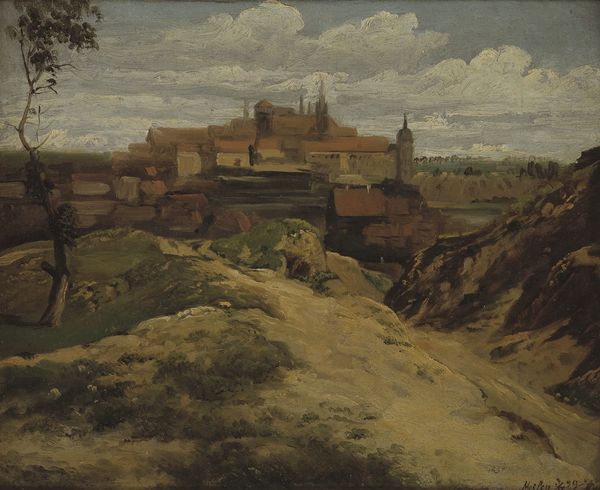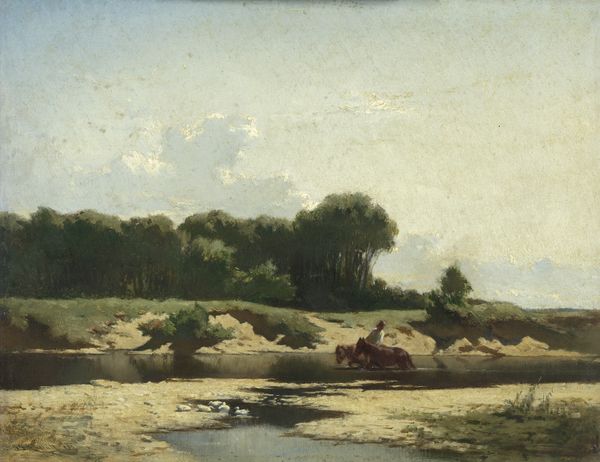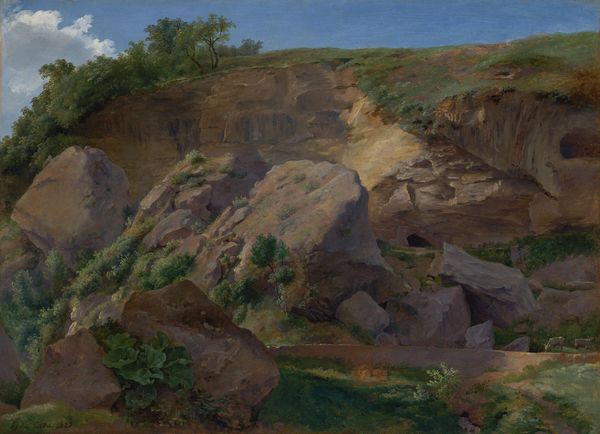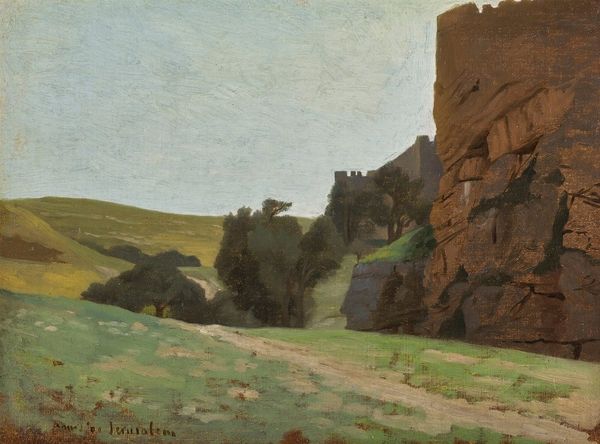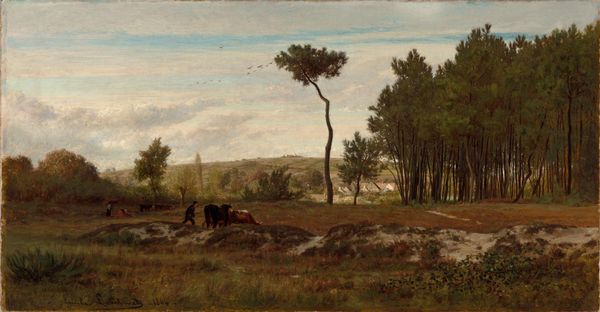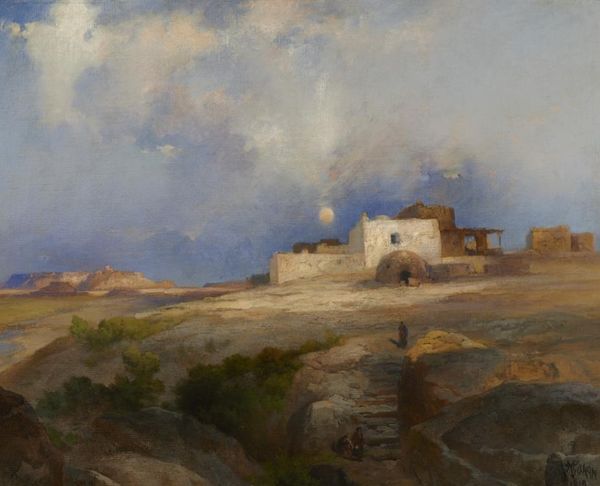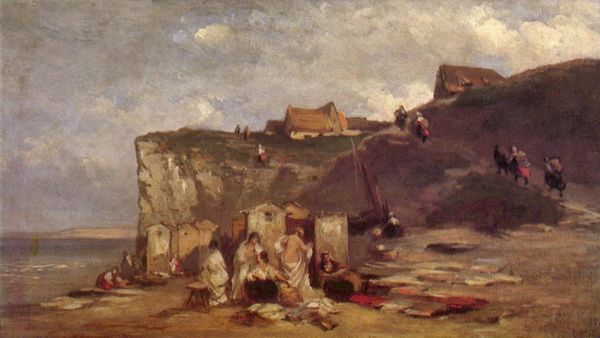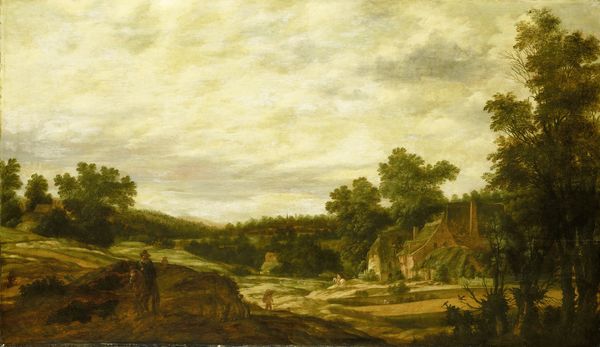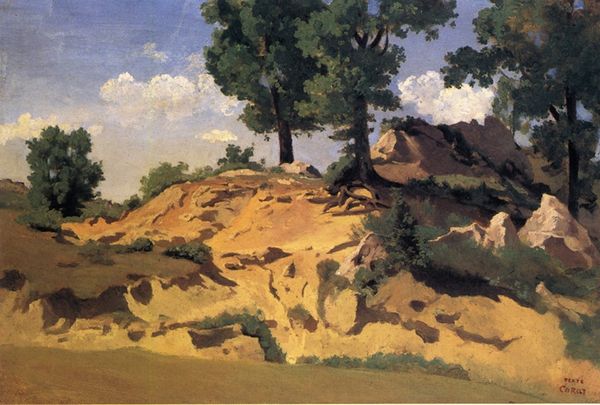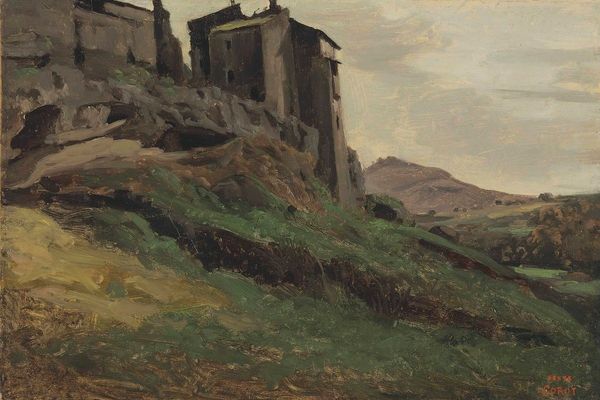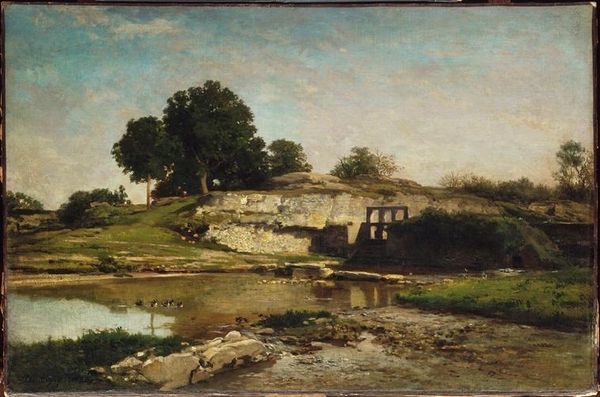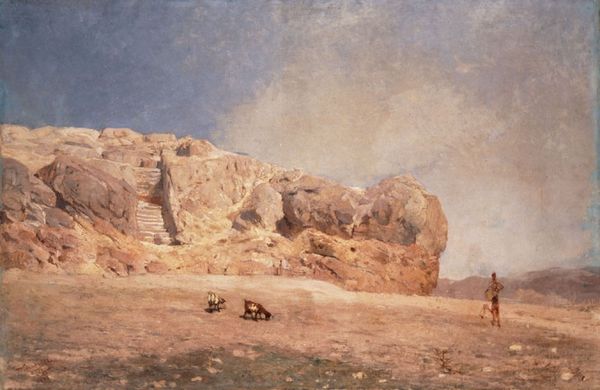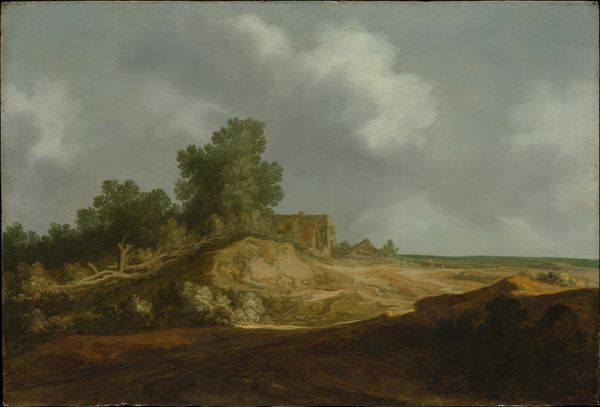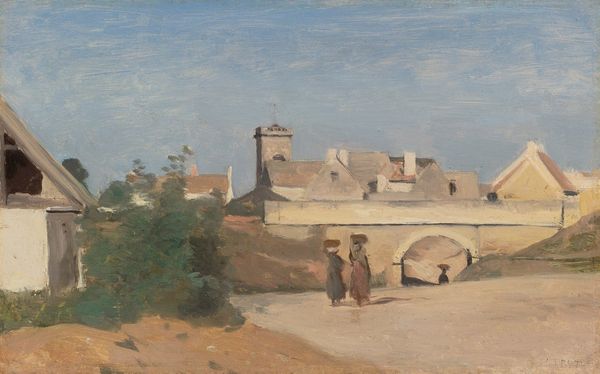
painting, oil-paint, sculpture
#
neoclacissism
#
painting
#
oil-paint
#
landscape
#
romanesque
#
oil painting
#
classicism
#
sculpture
#
france
#
painting painterly
#
history-painting
Dimensions: 8 5/8 × 11 5/8 in. (21.9 × 29.5 cm)
Copyright: Public Domain
Curator: What an interesting landscape, I am not very fond of it, it seems empty, like there is no sign of human history at all... Editor: That's where you’re wrong. This is "The Imperial Palace on the Palatine, Rome," an 1834 oil painting by Paul Flandrin. It might appear barren, but it is laden with cultural memory and implications. Curator: From my point of view, it’s just an arid image… Why do you consider it historically loaded? Editor: The Palatine Hill wasn’t just any location; it was the centermost of the Seven Hills of Rome. According to the myth, Romulus founded Rome on the Palatine, a space practically synonymous with power and empire. Its ruined state here—Flandrin painted this during his travels in Italy—serves as a potent reminder of lost empires and the transience of power. Curator: So it's about a historical painting rather than about power; and as such, the landscape is no more than an instrument of that reminder? I can observe, nevertheless, echoes of the Romanesque in its monumental arches and a sort of neoclassical, yearning for ideal landscapes… Is it a French point of view of an iconic past, perhaps? Editor: Precisely! It is neoclassicism tinged with French nostalgia. It encapsulates that moment when Romanticism’s fascination with ruins began to intersect with a rising French national identity seeking to link itself to the grandeur of Rome. Consider that this work was produced in a period when France was experiencing considerable internal tumult; imaging and engaging with the past, like ancient Rome, gave answers to questions about the present. The painter wasn’t Italian after all, and his memory of that territory probably informed the painting's aesthetic! Curator: So, Flandrin uses those powerful symbols and composition techniques to convey his nation’s desires. It does seem as if history has shaped how we perceive such scenery. Editor: Exactly. And I think examining art from a place like this allows us to unravel how societies continue negotiating with their shared past. Thanks for sharing these important viewpoints.
Comments
No comments
Be the first to comment and join the conversation on the ultimate creative platform.
